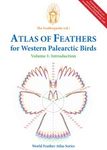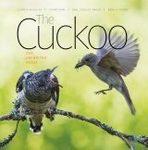About this book
Unlike any other book, Avian Cognition thoroughly examines avian intelligence, behavior, and individuality. Preferences, choices, motivation, and habits of species, flocks, and individual birds are discussed and compared. Avian Cognition investigates who birds are and why they do what they do. Daily, seasonal, and play activities, creativity, reasoning abilities, problem-solving skills, social interaction, life stages, and communication patterns are described, and a distinction is made between vocalizations that are learned and those that are inherited. The behavior and intelligence of both wild and pet birds is compared, and unlike other books, entire chapters are devoted to a single species.
Contents
- List of Tables
- List of Figures
- List of Photographs
- Preface
What is Intelligence Anyway? Definitions, Models, and Theories
- Learning
- Thought
- Emotion
- Consciousness
- Behavior
- Language, Culture, and Technology
- Adaptation, Instinct, and Intuition
Heron
- Background
- Green Heron
- Great Blue Heron
- Black-crowned Night Heron
- Yellow-crowned Night Heron
- Discussion
Canada Geese
- Background
- Characteristics
- Family Life and Daily Activities
- Seasonal Behaviors
- Individual Behaviors
- Discussion
Mallard Duck
- Background
- Characteristics
- Family Life and Daily Activities
- Seasonal Behaviors
- Individual Behaviors
- Comparison of Mallard Duck and Canada Geese Behavior
- Discussion
Ruby-throated Hummingbird
- Background
- Characteristics
- Family Life
- Individual Behaviors
- Discussion
Cardinal
- Background
- Characteristics
- Family Life
- Individual Behaviors
- Discussion
Budgerigar
- Background
- Characteristics
- Uzziel
- Precious
- Slate, Lilac, Sunflower, and Sky
- Other Interesting, Surprising, and Amusing Behaviors
- Discussion
Zebra Finches
- Background
- Characteristics
- Adult Zebra Finch Behaviors
- Development and Behavior of Zebra Finch Nestlings (0-3 months)
- Discussion
Meyer's Parrot and Red-Bellied Parrot
- Background
- Characteristics
- Squeaky
- Sydney
- Discussion
Indian Ringneck Parakeet
- Background
- Characteristics
- Maku
- Snapdragon
- Bluebell
- Dusty
- Discussion
Mitred Conure
- Background
- Characteristics
- Rudy
- Buster
- Discussion
Avian Communication Patterns
- Background
- Mallard Duck Ice Medley, Disk 1 Track 1
- Canada Geese Winter Song, Disk 1 Track 2
- Canada Goslings, Disk 1 Track 3
- Zebra Finch Phonics, Disk 1, Track 4
- Indian Ringneck Parakeet Roundtable, Disk 2 Track 1
- Meyer's Parrot Beeps and Whistles, Disk 2 Track 2
- Mitred Conure Chortling, Disk 2 Track 3
- Budgerigar Morning Chorus, Disk 2 Track 4
- Epilogue
- Appendices
- Glossary
- Bibliography
- Observation Locations and Populations
- Budgerigars and Children: A Tribute to Perky
- Index
Customer Reviews
Biography
Debra Herrmann is a Principle Research Scientist with the Biological Computing Initiative. She leads interdisciplinary research that examines the parallels between avian intelligence, behavior, learning, reasoning, problem solving, and communication skills and computer intelligence, artificial intelligence, neural nets, computer heuristics, and other biological computing models found in nature.
Debra has been active in the federal and academic research communities in the Washington, D.C. area for the past 30 years. She has competed for and received research funding ranging from $50K to $4M for various projects, and because of her expertise, Debra has been asked to sit on panels evaluating research proposals submitted to the U.S. government for funding.
Debra led or participated in all the observational field studies reported in this book. She has participated in birding activities locally and on three continents (so far) over a span of 30 years. Debra teaches graduate, undergraduate, and professional short courses. She is a frequent guest speaker at annual conferences, monthly educational seminars, and informal committee meetings hosted by scholarly organizations and general membership societies. Avian Cognition is her fifth book. Her hope is that Avian Cognition will serve as a catalyst for increased public understanding of avian intelligence and behavior, better treatment of wild and pet birds worldwide, and more research in this area.



































